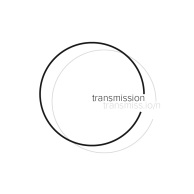How VR could be the future of theatre
Virtual reality is being hailed as the future of Hollywood, but might VR's more natural home be the stage?

Cast your eyes across the programme of any forward thinking film festival and you’ll find a strand devoted to virtual reality. Even at a dinosaur like Cannes, where cinema is so sacrosanct that critics get in a tizzy about the inclusion of television in the line-up, VR has crept in. This year’s festival saw the premiere of refugee VR experience Carne y Arena, from Alejandro Iñárritu, the Oscar-winning director of The Revenant. Hollywood is clearly taking the technology seriously, but what if they’re barking up the wrong augmented reality?
Anyone who’s experienced VR will tell you it’s not particularly analogous with cinema. “Think about it,” says Ian Garrett, a designer and producer currently working on multi-site specific project Transmission. “If you're a filmmaker and you're moving from 2D cinema to 360 or VR filming, then you've gone from this limited frame where you have complete control over the audience's POV to a wide open environment where nothing is hidden and you can't control what your audience is looking at.”
To put it another way, in VR, you, the viewer, are in control of the image; in a sense, you are the director. Many argue this absence of an auteur is what makes VR a passing fad, but as Garrett notes, there is already a medium where the creators are required to give up control of the audience: theatre. “As theatre-makers, we put ourselves in place of an audience member in a chair or an environment,” says Garrett. “So in that way the technology lends itself to this sort of immersive recording of the live experience without much of a leap or change of how we think as theatre-makers.”
One of the most straightforward and practical uses of the technology, for example, would be to allow remote audiences to virtually experience watching a show like, say, Hamilton, but without having to physically be in the theatre or buy the expensive ticket.
It’s when you begin to think about immersive theatre, where the audience is at the centre of the action of the play rather than behind the proscenium arch, that the similarities between theatre and VR become even more pronounced. “With both you have an audience that doesn't want to remain passive,” notes Megan Reilly, Transmission’s lighting designer, “they want to be an active participant in a story, and have some degree of agency. They give an audience member the opportunity to explore an environment that tells a story.”
There is of course one VR stumbling block that seems insurmountable at this early stage in the technology: the headset. One of theatre’s great pleasures is experiencing it with an audience; the VR headset turns theatre into a solitary experience. There is an exciting inbetween solution, however: augmented reality.
“A lot of augmented reality technology relies on the participant being in a specific location in order to experience it,” explains Reilly. Think of games like Pokémon Go and Ingress. “Immersive theatre requires the same kind of active participation and location specificity,” she says. “Augmented reality technology means that layers of a narrative can be embedded in specific places and accessed only when an audience member is physically at that spot.”
You can see this augmented reality theatre in action in Reilly and Garrett’s upcoming Transmission project – described as “an immersive theatre production that tells the story of two brilliant sisters selected to join a mission to meet our celestial neighbors” – at this year’s Fringe. “We're working with the idea of ‘Technological Ghosts’, which uses VR and AR recordings,” explains Garrett, “but asks the audiences to experience them concurrent to a live experience.”
For example, one scene takes audiences to Arthur's Seat. “You're intended to go to the spot where it was recorded, and then watch a 360 video that lines up with the real view on your device,” explains Garrett. “So that you're looking through the device as a window into the past. It informs your understanding of the space, by showing you the ‘ghosts’ of a previous event.”
Rather than the dystopian vision of VR, where we put on our headsets and never interact with real life, Garrett suggests that the technology could, ironically, help reduce the amount of time we spend looking at screens: “Pokémon Go got a lot of people to go outside! They may have been looking for a Pikachu, but they also started to see part of their city which they may not have. It's about introducing people to new and novel real spaces, by enhancing it with a certain type of digital magic.”
Garrett is sounding almost metaphysical: “In the end, the thing I turn back to is an idea which someone told me about understanding VR. VR is not necessarily a technology, but an achieved state.”
Transmission is told through a live show at the Fringe, a podcast, and several site-specific, augmented reality scenes. Assembly George Square Studios, 5-26 Aug
Download the app from 4 Aug
Twitter: @luxtaterra
Facebook: facebook.com/luxtaterra